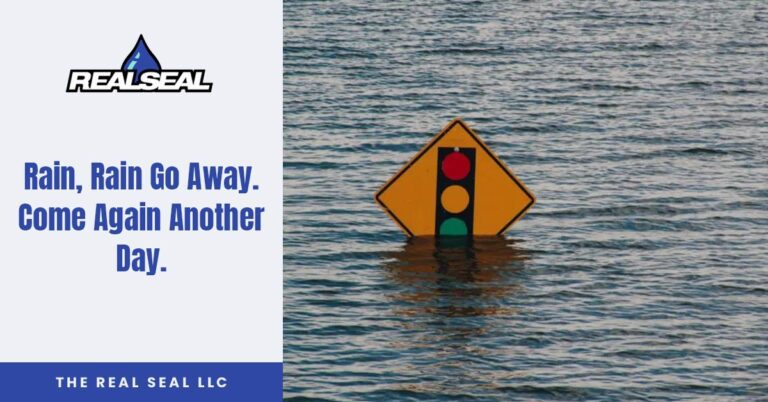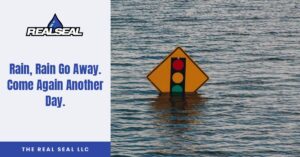We all need it, and at the right times we all enjoy it. Rain is an essential part of our lives, providing fresh water and cooling us down on hot days. We can dance and sing in the rain, jump in puddles, and enjoy a free car wash. It isn’t all glamour, though. Rain can be DESTRUCTIVE. It can be hard to imagine, holding your hand out in the rain, how much force water can impose. It’s the story of working together to accomplish something bigger. What is an ocean but a multitude of drops?
Gathering Impact
Ok, so water weighs a log, big deal, right? Wrong. When gathered in larger bodies, water can shape the world. From wear and tear over time, to large build-ups of pressure, water can act as slow as time or as quick as a flash (flood). Ha! But seriously, here is a short list of the tremendous examples of water’s force:
The Grand Canyon
Need we say more? We will. But the Grand Canyon is the result of millions of years of slow erosion from water.
Brunswick, Canada
Large, vertical rocks have been eroded away by the tide, creating different shapes, and even a rock named “Elephant Rock” for its likeness to, well you know..
Glacial Erosion
Take a look at Tronador Volcano in Chile. Solid ice will pick up debris and transport it further down the line. This slow process shows how even ice will act like water.
So What About Me? How Does Water Affect My Home?
Good question, I’m glad you asked. We obviously do not need to worry about these kinds of water damage in our homes. The impacts of water erosion take thousands and millions of years to happen. However, water can be much quicker in it’s destruction:
- Dam Collapses
- Flash Floods
- Reduced Visibility
- Quick, Building Pressure
Now, these are some issues to be worried over. Besides the obvious dangers of quick water buildup, there are some not-so-obvious dangers lurking under the ground around your foundation.
Did you know? In 1,000 SF of roof space, on average 600 gallons of water are produced from 1” of rain. With the average roof size clocking in at 1,700 SF, that means that for every 1” of rain, the average home’s roof produces 1,020 gallons of water.
Learn more about – Why You Need To Waterproof Your Crawl Space?
How Much is 1,000 Gallons of Water?
1,000 Gallons of Water weights over 8,300 lbs. That is a lot of weight! That is heavier than a Hippo, twice the weight of a Rhino, and 2x the weight of your car! That’s a lot of mass! What do you think can happen what that is built up on the side of your 8” (average) thick foundation walls? Imagine 2 Rhinos charging your home’s foundation and maybe you’ll get the idea.
All of this weight has a large impact on your home. The tremendous water buildup, especially in heavy rains, can put destructive forces on your foundation. Our last 5” rain we got would mean the average home saw over 5,000 gallons of water. That’s 10 Rhinos!!! Come on! We need to do something about our roof water. It is not to be ignored, especially as this water gathers around your foundation. As it builds up, it creates pressure and presses in. The end result of this are bowed & buckling walls. This page on our website describes these issues and their respective solutions:
But I Have Rain Barrels!
No, you have thimbles compared to the water coming off your home. 4-60 gallon rain barrels produce 240 gallons. That is like you standing outside with a drinking cup and trying to catch all the rain as it falls. Impossible. And worse yet, they give you a false sense of security.
IF you decide to use rain barrels, for the purpose of collecting water for later, be sure that you have overflow discharges that lead to an underground line that runs the water at least 20 feet from the home. Those rain barrels overflowing next to your house are doing your home’s foundation no good. The more water builds up, the more problems are created, the more it costs to fix. And as time goes on, the problems get worse, and their solutions get more invasive and expensive.
That Sinking Feeling
The pressure exerted on a foundation is a concept fairly easy to grasp. Water builds up on the outside of the foundation and pushes in. Simple. The next concept is also easy to grasp, but can take a little visualization.
Where are my Monty Python fans out there? “They told me I was DAFT to build a castle in a swamp. I did it anyway. That sank into the swamp.”
Water can have destabilizing effects on soil as well. Super-saturated soil loses its strength and allows weight above to compress it even further. Worse yet, build-up and movement of water can wash dirt away from under the foundation, leaving large gaps that allow the home to sink and settle into the ground. Broken Sewer Pipes can add to this, as a hole in a pipe can transport a lot of dirt from under your home, much like a conveyor belt.
As annoying as the symptoms of the issues are:
- Settling Sidewalks
- Sinking Foundations
- Cracked Siding/Brick
- Doors/Windows not opening/closing
The issues only get worse. It is one thing that a door or window is getting sticky. It is another entirely with a 1” ceiling crack and a front door that will not budge. Both are possibilities in a home and depend entirely on the action taken by the homeowner. If a problem is left to fester, it will only get worse. The link below brings you to our page describing Foundation Piering, the techniques behind it, and its respective costs:
Summing It Up
I could go on and on about the effects of water. From obvious roof run-off to less though of underwater streams, water can have a large impact on your foundation. It is important as a homeowner to be aware of these issues and forces so you can combat them before they cost you thousands of dollars. Below are a few tips to help prevent water from costing you your largest investment:
Extend your gutters 20 feet from the home
Gutters ending next to the home are the leading cause for Foundation Issues. Extend them!
Grade your landscaping away from your home
The dirt level should grade away from your home, allowing a natural flow of water away from the foundation.
Get your sewer lines scoped 2x a year
A simple crack in a sewer line can cause large voids under the soil, which can allow your home to settle.
Clean your gutters
Starting and ending with gutters. Keep them clean! A clogged gutter is as useless as a tire with no rubber.
I hope you’ve learned a few things about water today. Used correctly, it can power cities. Ignored, and it can destroy everything you have built. Be aware, stay vigilant, and remember:
“Not Everything’s Better When Wet”






